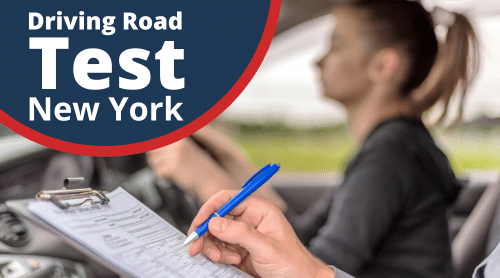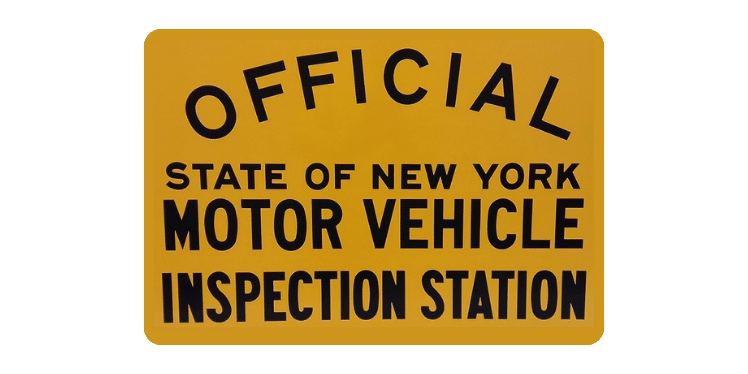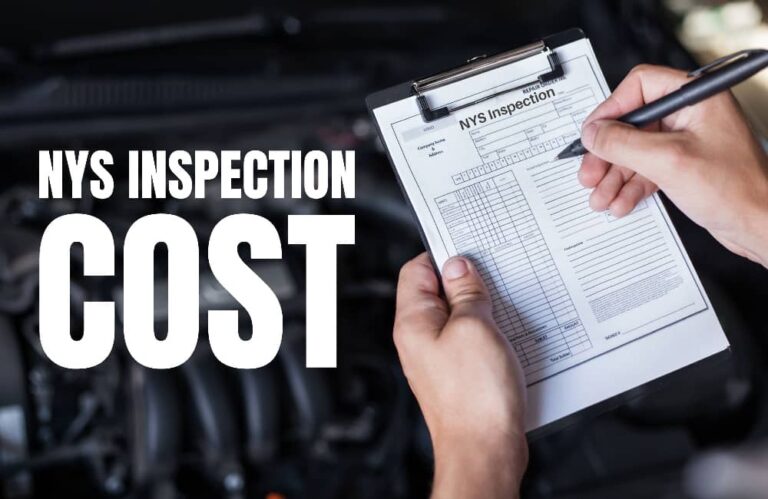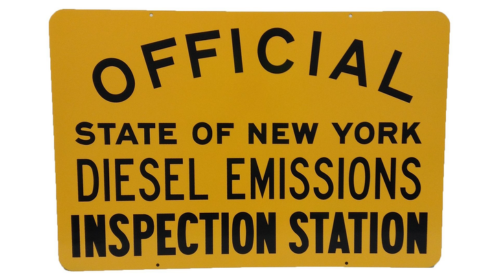Driving Road Test NYC
So you’re looking to get your license in New York. Thankfully, the process is not as complicated as it seems. Here, we’ll cover the road tests in New York, how to know if you’ve passed your driver’s test, the NYS road test schedule, the Nys license test schedule, and of course, the DMV road test.
Our goal with this guide is to make sure you’re as ready as possible for your test, and feel confident in your skills going into your appointment. Without further ado, let’s break down everything you need to know about the NYS driving road test.
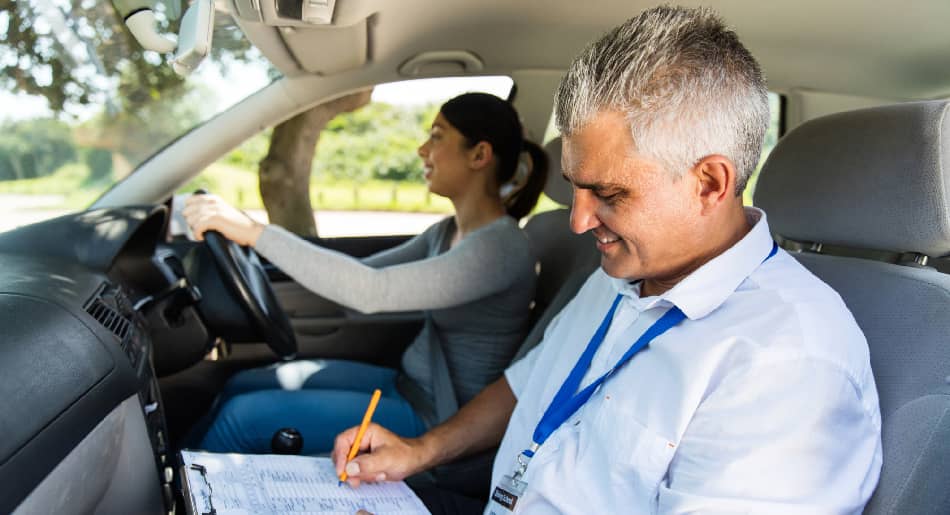
History of the Road Test in New York
Did you know that in 1919, you only needed a driver’s license if you operated a vehicle 10 days out of the month? That changed in 1924 with the requirement for all vehicle operators to get a license. The road test and driving test as we know it didn’t come about until 1925, and has existed as an institution since that point.
Many things have changed since 1925, including the make of many cars and the speeds on major roads. However, the existence of the road test to ensure drivers know how to operate a vehicle stays consistent.
Importance of the Road Test
Taking the road test in New York is a crucial part of obtaining a license. Not only does it signify you’ve done the prerequisite driving practice (in the case of 18 and under permitted drivers), but it also guarantees you know how to operate and control a vehicle. This includes things like stopping in time, maintaining control of the vehicle, and using proper signals when turning.
Understanding traffic signs, moving with the flow of traffic, and navigating the roads carefully and correctly are all important parts of the road test. At the end of the day, road tests exist for the safety of drivers and pedestrians in New York, making them a crucial part of traversing the state along various highways.
Preparing for Your Road Test
Let’s take a look at everything you need to know to prep for your road test, from eligibility and requirements to prepping for the test itself.
Eligibility
First, to get your driving permit in New York, you must be 16 years old or older. A driver must have this permit and have attended a 5-hour pre-licensing driving course or a high school or college driving course. To get a pre-licensing course certificate, also called a permit, you must pass a written driving test on the rules of the road.
Keep in mind there are restrictions on where permitted drivers can drive in New York. These restrictions do not allow permitted drivers to drive on the following:
- On any street within a park in New York City
- On any bridge or tunnel under the jurisdiction of the Tri-borough Bridge and Tunnel Authority
- On the Cross County, Hutchinson River, Saw Mill River, or Taconic State parkways in Westchester County
- In a DMV road test area
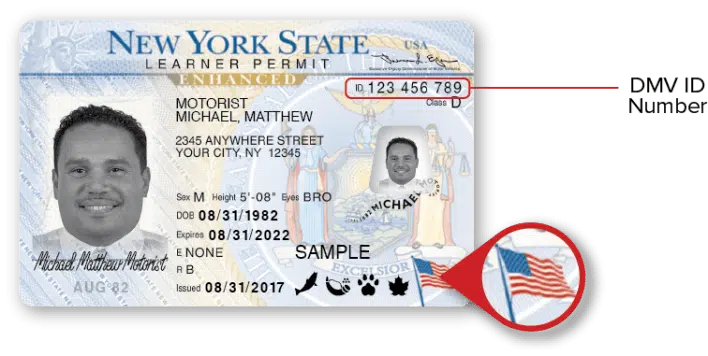
Source: https://dmv.ny.gov
Requirements
Once you have a permit, you must complete the required driving hours with a licensed driver 21 years or older in order to apply for your road test. You must also wait 6 months from getting your permit to apply for your license if you are under 18 years old.
In order to apply for your driving test, you will need:
- A valid New York State Learner Permit (view a sample learner’s permit)
- An unexpired Pre-Licensing Course Certificate (MV-278) or Student Certificate of Completion (MV-285). If you completed an online course through a DMV-approved provider, these records are already sent to the DMV, so you will not need a certificate. However, if you completed a driving school’s distance learning class, you need your MV-278 in order to take your road test.
- The ZIP Code for where you would like to take the road test
- At least one unused road test (each learner’s permit comes with two road tests, with more available upon failure at $10 for two).
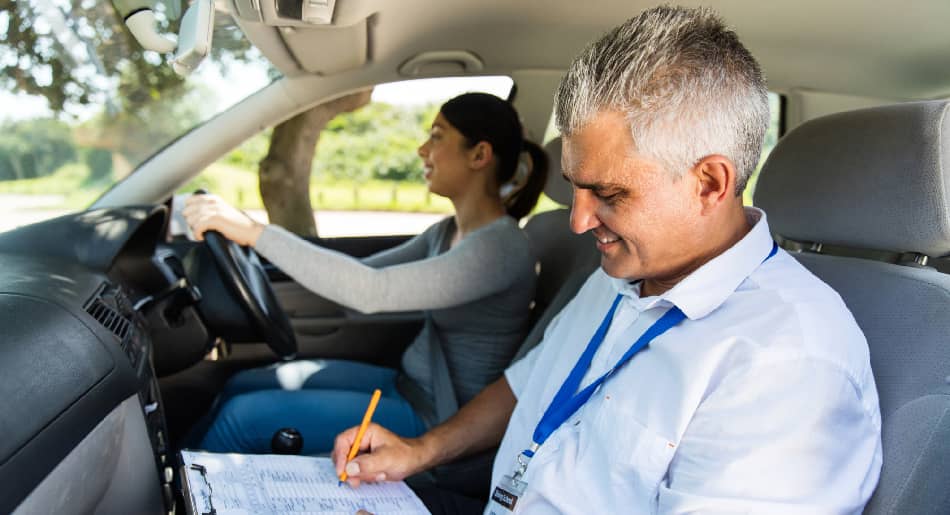
You do not need to schedule a road test in the same town, city, or county you live in, and you can schedule a test through the DMV website. Remember that your test date can be anywhere from 3 to 10 weeks from your application period, depending on scheduling time and demand. The DMV hosts weekday tests, with rare weekend tests offered on Saturdays.
On the day of your road test appointment, be sure to bring the following items for a Class D operating license:
- A licensed and registered vehicle to perform the road test. If you have an interim license or temporary learner permit without a photo, you must also show a New York State photo driver’s license or a New York State non-driver ID Card. Photo documents from other states are not accepted.
- Your photo learner permit
- Your glasses or contacts, if your permit indicates you need corrective lenses
- Your original Pre-licensing Course Certificate (MV-278) or Student Certificate of Completion (MV-285), copies are not acceptable
- A Certification of Supervised Driving (PDF) (MV-262), if you are under 18, completed by your parent or guardian, must be given to the license examiner each time you take a road test
- A driver age 21 or older who has a license valid to operate the test vehicle
- A vehicle to drive during the test with valid registration and inspection operates properly and is in clean condition.
- Only the accompanying driver of the vehicle (no other passengers are allowed)
Print this checklist to ensure you have everything required for your road test.
How to Prepare for Your Road Test
The best way to prepare for your road test is to follow the written scoring chart when practicing your driving.
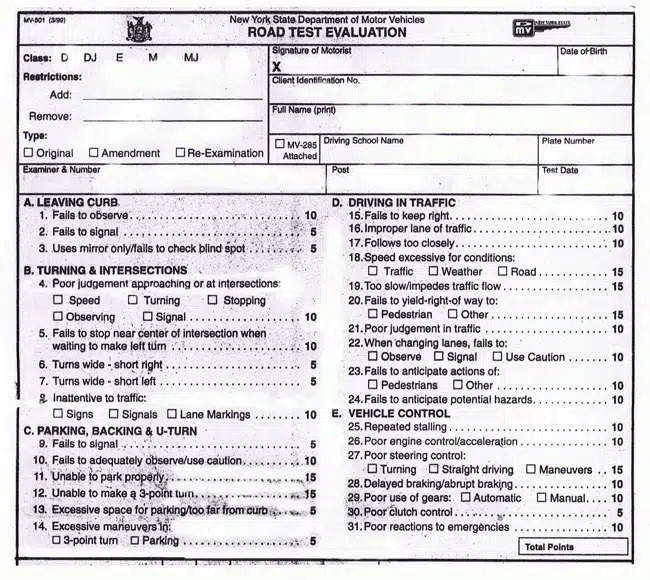
Source: https://pierrepauldriving.com
This gives you a guideline for what you’ll be tested on. Your license examiner will score your test according to a written chart (see above image). In order to prepare, make sure to practice the following driving safety skills:
- Leaving the curb
- Turning & intersections
- Changing lanes
- Parking, backing & u-turn
- Driving in traffic
- Vehicle control
If you have mastery over these skills and consistently use your turn signal, you’re likely to pass your driving test. Of course, it always helps to get in more practice and schedule practice sessions with a licensed driving instructor.
Vehicle Requirements for the Test
According to the NYS DMV, the vehicle must “have functional windshield wipers, seat belts, headlights, and other equipment, a front passenger area, and a seat free of trash, clutter, or debris that might stain or damage the license examiner’s uniform, and a front passenger door that can be opened from the inside of the vehicle.” You should ensure your vehicle is in top condition, including fully inflated wheels, overall cleanliness, and all legal registration and inspection requirements.
Tips for Nervous Drivers
If you’re a nervous driver, it can help to practice your driving test before you head to your road test location. Reviewing the test requirements and creating a scoring checklist can give you peace of mind before your test. You can also try meditation before your test (not while driving) and other anxiety-management techniques to reduce your anxiety levels. Remember, a driving test is not scoring you on anything other than your driving abilities, and you can retake a failed test at a later date.
Navigating the Scheduling Process
While the NYS road test scheduling and license test scheduling system may seem complex, we’re here to break it down into manageable pieces for you.
NYS Road Test Schedule & NYS License Test Schedule
Once you apply for a road test and license test date, your date will be scheduled for between 3 to 10 weeks out, depending on how busy the DMV is at the time. Remember that the DMV tends to receive more driving test applications during the summer months, as many school-age drivers book their appointments over the summer.
Since the DMV rarely schedules weekend tests, you will need to show up on a weekday for your test. If you cannot show up for your scheduled driver’s test, you will need to contact the DMV to reschedule.
How to Book an Appointment
Thankfully, you can easily book an appointment through the DMV. You can also schedule via the phone by calling 1-518-402-2100. Be sure to have the following items on hand when scheduling an appointment:
- A valid New York State Learner Permit
- An unexpired Pre-Licensing Course Certificate (MV-278) or Student Certificate of Completion (MV-285). If you completed an online course through a DMV-approved provider, these records are already sent to the DMV, so you will not need a certificate. However, if you completed a driving school’s distance learning class, you need your MV-278 in order to take your road test.
- The zip code for where you would like to take the road test
- At least one unused road test (each learner’s permit comes with two road tests, with more available upon failure at $10 for two).
Taking the DMV Road Test
Now that you’ve schedule your appointment and brought all your documents, it’s time to take the DMV road test. Here’s what to expect from the road test, and how you can easily tell if you passed or failed.
What to Expect on Test Day
When you arrive at your test location, follow the instructions on where to park your vehicle. If your road test is on a course, make sure to double-check on where to park with one of the staff members at the location and to follow all posted signage.
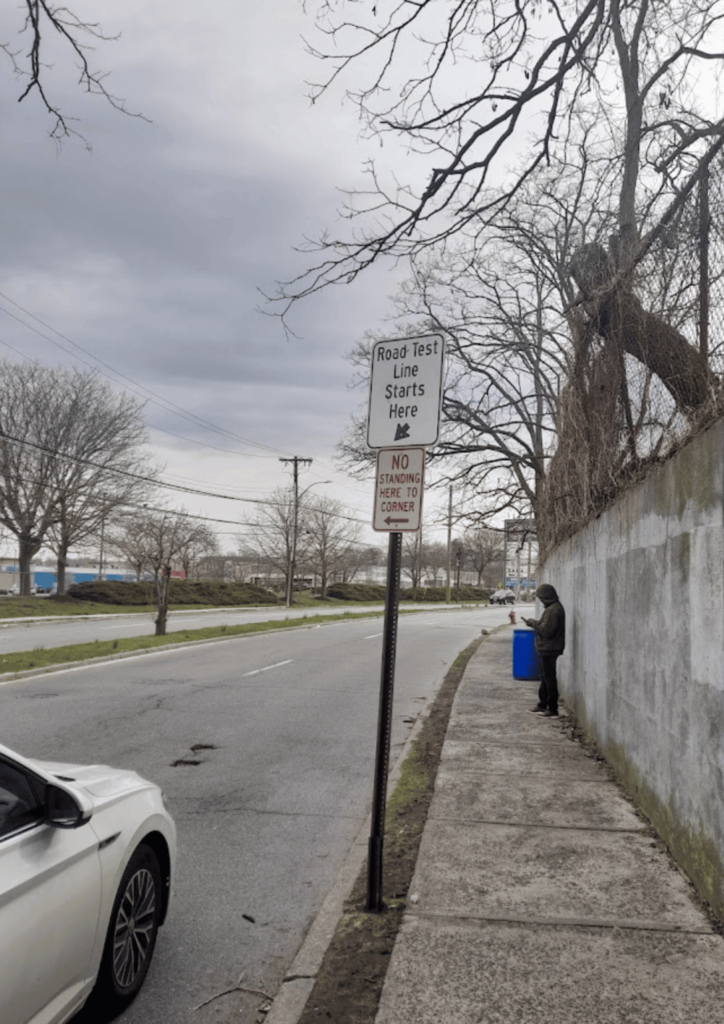
Source: NYS DMV – Road Test Side
During your road test, your instructor will walk you through the basic functions of your vehicle. They will check your lights, horn, signals, and other basic vehicle functions to ensure everything is in order before the test.
From this point, it is important to follow all instructions from your instructor. While it is okay to ask for clarification on a direction if you missed an instruction, many instructions are time-sensitive, so be sure to pay attention to your instructor’s directions.
Since all road tests are slightly different, it’s impossible to know what order you’ll be tested in. However, your driving instructor will take you through the following skill tests to ensure you have mastery over driving your vehicle:
- Leaving the curb
- Turning & intersections
- Changing lanes
- Parking, backing & u-turn
- Driving in traffic
- Vehicle control
After the test, your instructor will likely tell you if you have failed or passed your test once you reach the end of the course. However, in case they do not tell you, let’s take you through the test scoring criteria.
DMV Road Test Scoring and Criteria
Unlike a standardized test, where you earn points for right answers, you start your driver’s test with 100 points. Each mistake you make removes points from your total. If you lose a total of 30 points, you fail your driver’s test. That means if you have a score of 75 or above, you pass your driver’s test, while a score of 70 or below signals a failure.
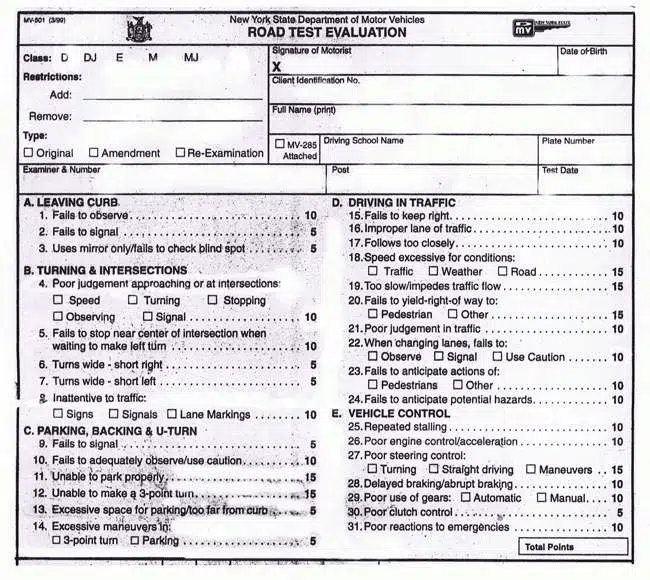
Source: https://pierrepauldriving.com
Common Mistakes to Avoid
Make sure to check your blind spots, and do not rely only on your mirrors when backing up. Use a signal at all times you may be leaving your lane, including passing or moving across the center line of the road. Be sure to follow all posted speed limits, and use caution in cases where you should drive slower than the posted limit, such as in inclement weather or traffic.
What to Do If You Pass/Fail
Once you’re done your driving test, it’s time to move on to the next step. Whether you passed or failed your driving test will determine those next steps, and how you can prepare for your next test (or move on to getting your license).
Actions After Passing / Failing
You can find the results of your driving test online at 6 pm the day of the test.
If you have failed your driver’s test, you must wait at least seven days to take the test again. You will go through the same scheduling process as you did for your first driver’s test, with a note that if you have no more driver’s tests prepaid from your permit fees, you will need to pay $10 for two more driver’s test chances.
If you passed your driver’s test, congratulations! It’s time to go through the process of getting your permanent license. You will get a temporary license from the DMV online while your permanent license is processed (about two weeks).
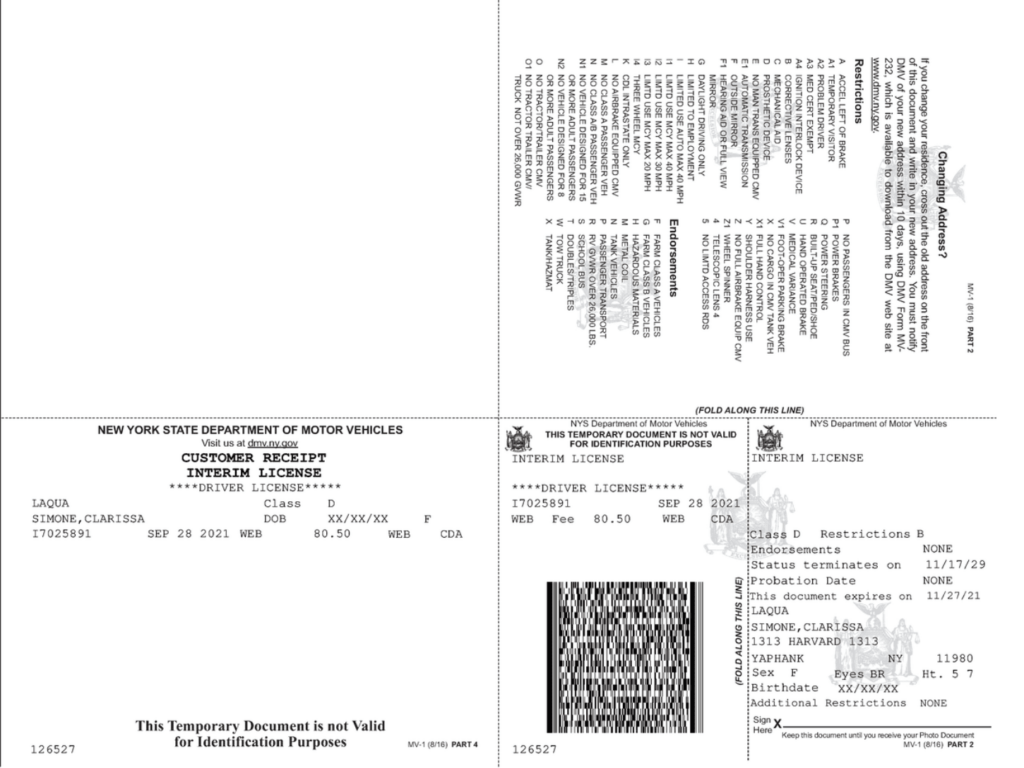
Source: https://www.studocu.com (Temporary license example)
Remember, your new license is on probation for six months following your test, so be sure to avoid the following driving mistakes:
- Speeding
- Participating in a speed contest
- Reckless driving
- Following too closely
- Use of a mobile telephone
- Use of a portable electronic device (for example a smartphone, tablet, GPS, or MP3 player)
- Any 2 other moving violations
Any of these will lead to your license being revoked for 60 days.
Additional Resources and Training Centers
If you’re interested in the 5-hour driver training course, or other resources for the road test, check out the NYS DMV’s website.
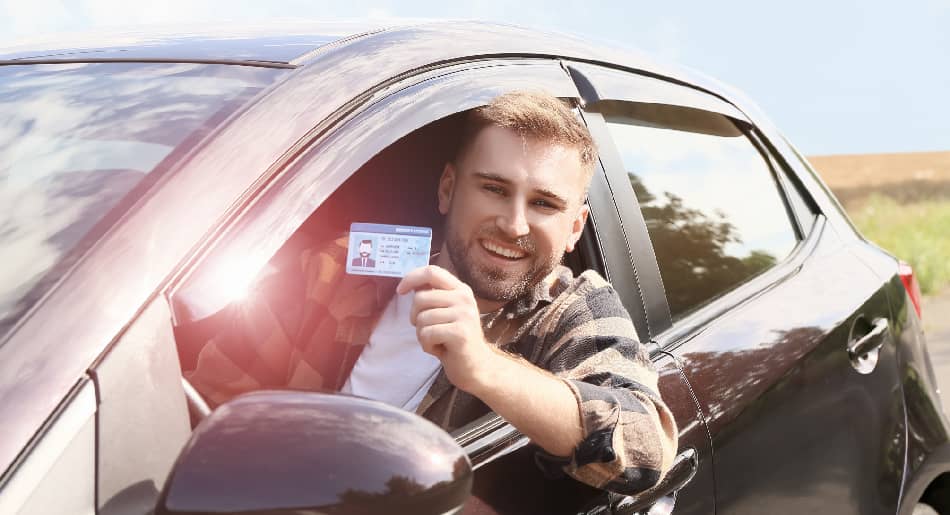
Frequently Asked Questions
How do I schedule my NYS road test or DMV road test?
You can schedule your road test through the DMV website using this link. You can also apply for the driver’s test by phone at 1-518-402-2100. Keep in mind that your scheduled test date will be at least three weeks from when you apply.
What will I be evaluated on during the NYS road test and DMV road test?
During your road test, you’ll be evaluated on how well you move through traffic. Your instructor will also check your reaction to various events, your use of your signals, and your parking prowess. In general, your driving instructor will check how well you handle the following driving events:
- Leaving the curb
- Turning & intersections
- Changing lanes
- Parking, backing & u-turn
- Driving in traffic
- Vehicle control
What should I do if I fail my road test?
If you fail your road test, you must wait at least seven days before scheduling a new appointment. If you have driver’s tests remaining, you can apply for a new test the same way you applied for your first test. However, if you are out of driver’s tests, you will have to buy more driver’s tests from the DMV.
What documents do I need to bring with me for the road test?
For your road test, you will need to bring your driver’s permit. If you have a permit with no picture, you will also need a valid photo ID. You should also bring your original Pre-licensing Course Certificate (MV-278) or Student Certificate of Completion (MV-285), and a Certification of Supervised Driving (MV-262), if you are under 18.
Conclusion
Now that you know what you need to bring to your road test and how the scoring works, you should be all set for the big day. Be sure to bring everything you need, take your time, and follow all road safety laws, and you should be well on your way to becoming a licensed NYS driver.

